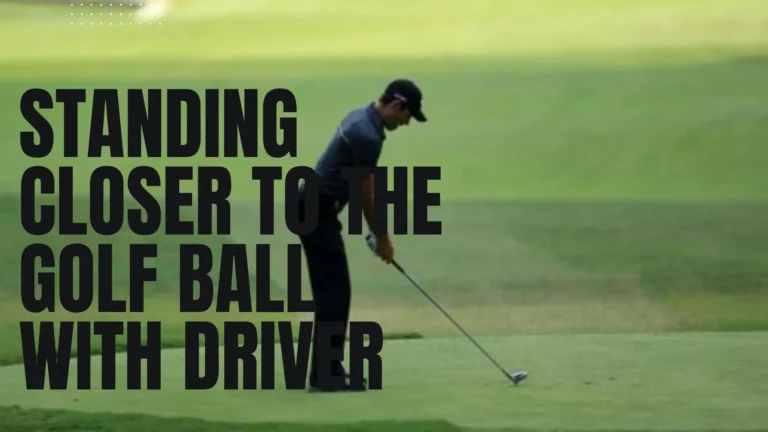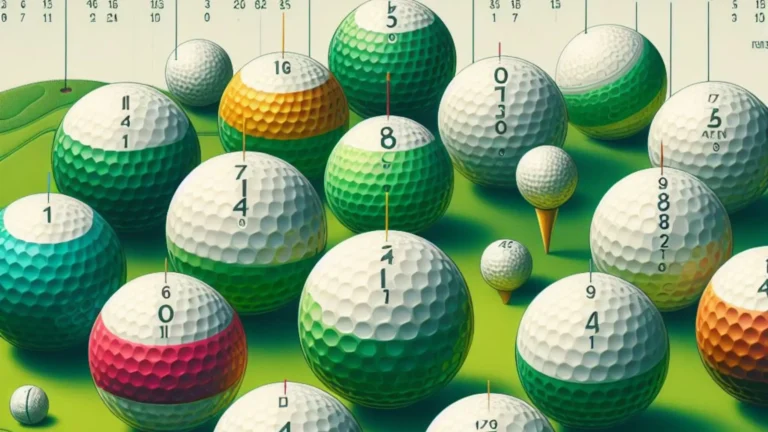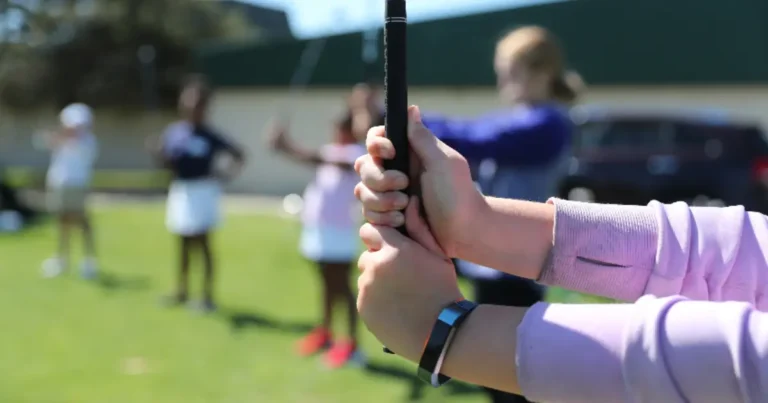WHAT IS A MULLIGAN IN GOLF?
Golf can be a real rollercoaster, you know. It’s a lot of fun and can be very rewarding, but it can also be extremely frustrating at times. Making a bad shot or missing an important putt can completely ruin an otherwise fantastic day on the golf course.
But here’s some good news: in casual games or charity events, you’re often given a do-over known as a mulligan. It’s like a second chance, but don’t get greedy because there are limitations.
So, if you’re curious about what a mulligan is in golf, how to use it, and when you should just suck it up and play on, keep reading to find out.
Where Does the Mulligan Fit into the Game of Golf?

Many golfers place a high value on following the rules. The “Mulligan,” derived from the traditional rule requiring players to play the ball as it lies without improving its position or the area of intended play, is a frequently used concept.
This rule can present significant challenges because players must deal with the exact conditions where the ball lands without making any adjustments. Depending on the circumstances surrounding the shot, this can be extremely difficult at times.
Fortunately, there are exceptions to this rule, which are typically applied on an individual basis by golf officials.
This is where Mulligan comes into play. A Mulligan, with the agreement of fellow players, allows a player to retake a shot in the event of bad luck, sudden adverse weather, or particularly poor previous shots.
However, it is important to note that Mulligans are not officially recognized in golf’s formal rules.
So, what’s the story behind the Mulligan?
Next, we’ll look at how this second-chance shot came about.
The origin of the Mulligan
So, have you ever wondered where the heck Mulligan came from? Nobody has a straight answer on that one. But, hey, there are a lot of stories going around about how this whole “second chance” thing started.
So, according to the USGA, or United States Golf Association, it all started with a guy named David Bernard Mulligan, a Canadian golfer who was swinging his clubs in the 1920s, mostly at Lambert Country Club in Quebec.
Now, the details are a little fuzzy, but here’s the scoop some claim Mulligan was out on the course and his first shot went completely off course. So he took another swing to compensate for it. The buddies he was playing with thought it would be cool to name the do-over shot after him, and thus the Mulligan was born. Mulligan allegedly spread the word about the second shot when he arrived in the United States.
Now here’s another twist in the Mulligan story: Some claim that it was not David Mulligan who started it all, but rather John A. Mulligan, also known as ‘Buddy’. Picture this: Buddy was the go-to guy in the locker room at Essex Fells Country Club in New Jersey during the 1930s.
When he wasn’t handing out towels and shining shoes, he was out on the course, swinging clubs with the pros. So the story goes that one day Buddy’s playing partners witnessed him make this horrendous shot. And, being the stand-up guys they were, they decided to give him a second chance since they had time to warm up while Buddy was working.
According to some, the Mulligan legend began with Buddy rather than David.
Another version of the story states that Mulligan had a wild ride to the golf course, became jittery and nervous, and completely flubbed his first shot. So, someone took pity on him and gave him another chance.
An Unfriendly Nickname for Irish Players
Another theory proposed revolves around an offensive slur directed at the increased number of Irish players populating American golf courses at the time, when they were thought to be embarrassingly bad at the game.
Regardless of which version you believe, the Mulligan is a powerful unofficial rule that many players still adhere to today.
So, what exactly is a Mulligan? Next, we will dissect the term.
What is a Mulligan in golf exactly?
So, now that we understand where the Mulligan came from, let’s look at what it means for your golf game.
So, here’s the deal with a Mulligan in golf: It’s essentially a do-over for any amateur or charity player. You mess up a shot? No worries, you can try again from where you hit the last one, but there’s a catch: you’ll face some sort of penalty or consequence for it.
Mulligans are typically used during more relaxed rounds of golf. You know, when your shot goes completely off course or the weather alters your ball’s trajectory. Using a Mulligan allows the game to flow more smoothly and quickly.
If your ball goes missing, you can simply redo the shot rather than spending hours searching for it.
The catch is that everyone who plays must agree ahead of time that Mulligans are fair game. It’s a big no-no to try or even suggest a Mulligan in a game without everyone’s agreement. In some competitions, attempting to sneak in a Mulligan could get you kicked out of the game entirely.
The purpose of a Mulligan
The primary goal of a mulligan is to help golfers of all skill levels have more fun on the course. Rather than becoming frustrated after a poor shot, a mulligan erases the error and allows you to pretend it never occurred. This prevents new players from giving up after blading the ball 20 yards or slicing it deep into the woods. It also allows seasoned golfers to laugh off the bad shots and inconsistent contact that every player experiences. Mulligans, in some ways, take the sting out of a difficult game and inject some much-needed fun into it. They make the game more enjoyable overall.
Number of Mulligans allowed
While official golf rules prohibit mulligans under any circumstances, when playing casually, the generally accepted number is one mulligan per nine holes. This provides some leeway while still requiring focus and consistency on the majority of shots. More relaxed groups may permit up to two per nine holes, depending on the overall scoring pace and pressure in the group.
When playing a casual tournament or match with friends, even one per nine may seem generous. Better players prefer fewer mulligans or none at all, regardless of their partners’ skill level. Ultimately, the number allowed is determined by each foursome.
The Stigma of When to Ask for a Mulligan in Golf
Mulligans are frowned upon by serious and traditional golfers whenever rules and penalties are involved. Using that breakfast ball off the first tee while others are watching feels like cheating to some purists. Judges of etiquette may raise an eyebrow when a player requests a free redo immediately after missing a 3-foot putt. Golf is known for its honesty, integrity, and callous perseverance.
So, while casual players enjoy mulligans, many feel pressured to adhere to certain standards regarding when it is appropriate to ask for one. A sliced tee shot into the woods gets little attention, but missing an easy tap-in putt and immediately calling for a mulligan crosses an invisible line for some. Few people would openly judge or criticize in the moment, but asking at the wrong time can feel like breaking an unofficial set of rules and etiquette.
When Not to Request a Mulligan on the Golf Course
Mulligans in golf should not be requested when rules, penalties, honors, or money are directly involved. This includes hitting a bad chip during match play, missing a short putt in a tournament, topping a drive into a hazard in a cash game with friends, or hitting a tee shot OB off the first to begin a competition. The more formal or competitive the round, the less fitting it is to request a casual do-over.
Asking for multiple mulligans per round, even in very casual play, appears excessive to most golfers. If you play preferred lies after heavy rains, allow putts within a putter grip, or give gimmes within a foot, and then add mulligans, you are violating the spirit of the game. Save do-overs for early, insignificant shots rather than errors that clearly cost you strokes worth counting.
Make Your Golf Game the Best It Can Be with Glenmuir
If you want to rely less on Mulligans in golf and see real improvements on the course, quality golf apparel can boost your confidence and consistency. Glenmuir’s performance fabrics, flexible cuts, and renowned attention to detail give you an extra edge.
Their shirts, pants, shorts, outerwear, and accessories prepare dedicated golfers for success from the first shot to the last putt. After just one round with Glenmuir’s focus-enhancing equipment, your shots will fly straighter and land softer. Mulligans become an afterthought rather than an every-hole necessity when you make consistent excellent contact. Allow Glenmuir to help you perform at your best on the course this season.
FAQs
How many mulligans are allowed in golf?
Mulligans and “do-overs” are not permitted during official tournament play or under the Rules of Golf. However, when playing casual rounds with friends, it is customary to take one mulligan per nine holes, allowing players to correct a poor tee shot. Some casual groups allow for two mulligans per nine holes. The number allowed is up to each foursome, but more than two per nine is considered excessive by most.
Why is it called a mulligan?
The term’s origin is unknown, but the most popular story credits a Canadian golfer named David Mulligan. In the 1920s, Mulligan allegedly hit a poor first tee shot in a club match and decided to re-tee and try again without penalty, coining the term “mulligan” for the do-over. However, earlier uses of the phrase have been documented, making the precise origin unknown.
What exactly does “pull a mulligan” mean?
To “pull a mulligan” is to re-hit a poor shot without counting the first attempt. So, if a player tops their drive by 20 yards, they may declare they’re “pulling a mulligan” and hit a second ball from the tee with no penalty, ignoring the poor first shot.
What is a “gilligan” in golf?
This is most likely a joke about Gilligan, the bumbling first mate from the TV show Gilligan’s Island. Hitting a “gilligan” in golf most likely refers to completely whiffing on a shot and missing the ball entirely. It’s another humorous golfing mishap term with no rules significance other than to make people laugh.
Conclusion
Mulligans in golf are an excellent way to keep a golf game relaxed and stress-free by providing an extra shot to replace a poor one. Although Mulligans are not permitted in professional tournaments, many amateurs use them when they encounter a difficult situation on the golf course. Of course, being able to ask for a Mulligan is contingent on the group. Before the game starts, you should agree to allow Mulligans if there is a bad shot – or more. After all, golf should be a relaxing sport with good sportsmanship and a sense of humour. While we may never know the exact origin of the Mulligan, one thing is certain: spending an early Sunday morning on the golf course with friends would be incomplete without it.







